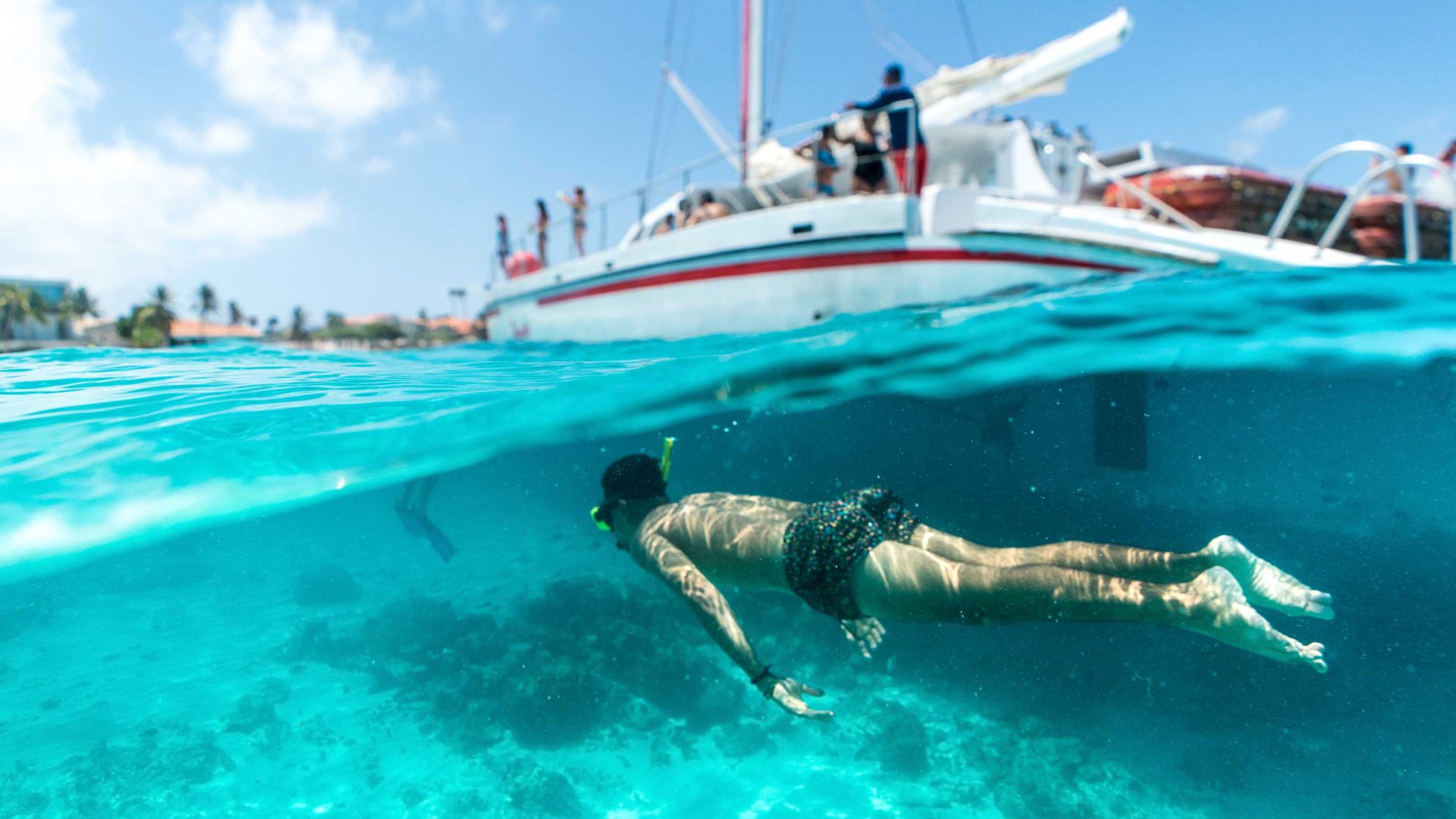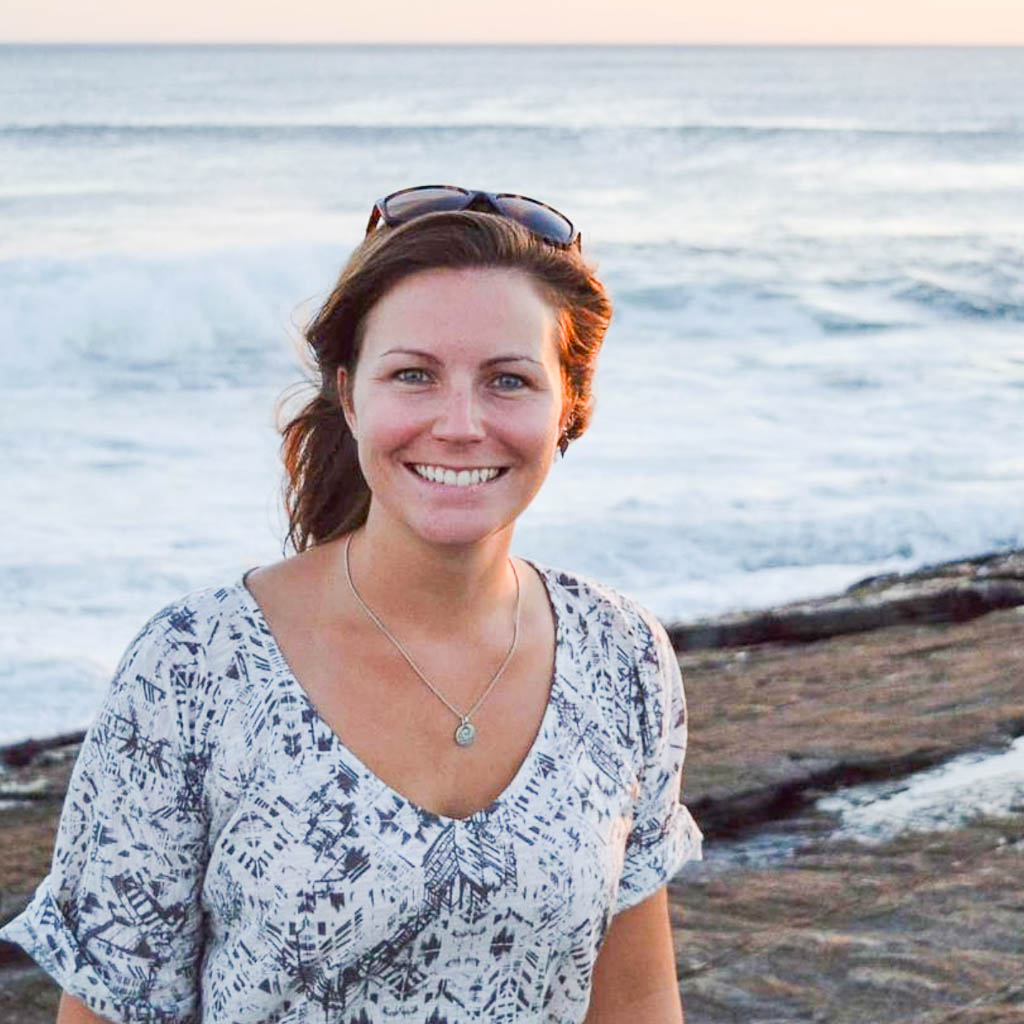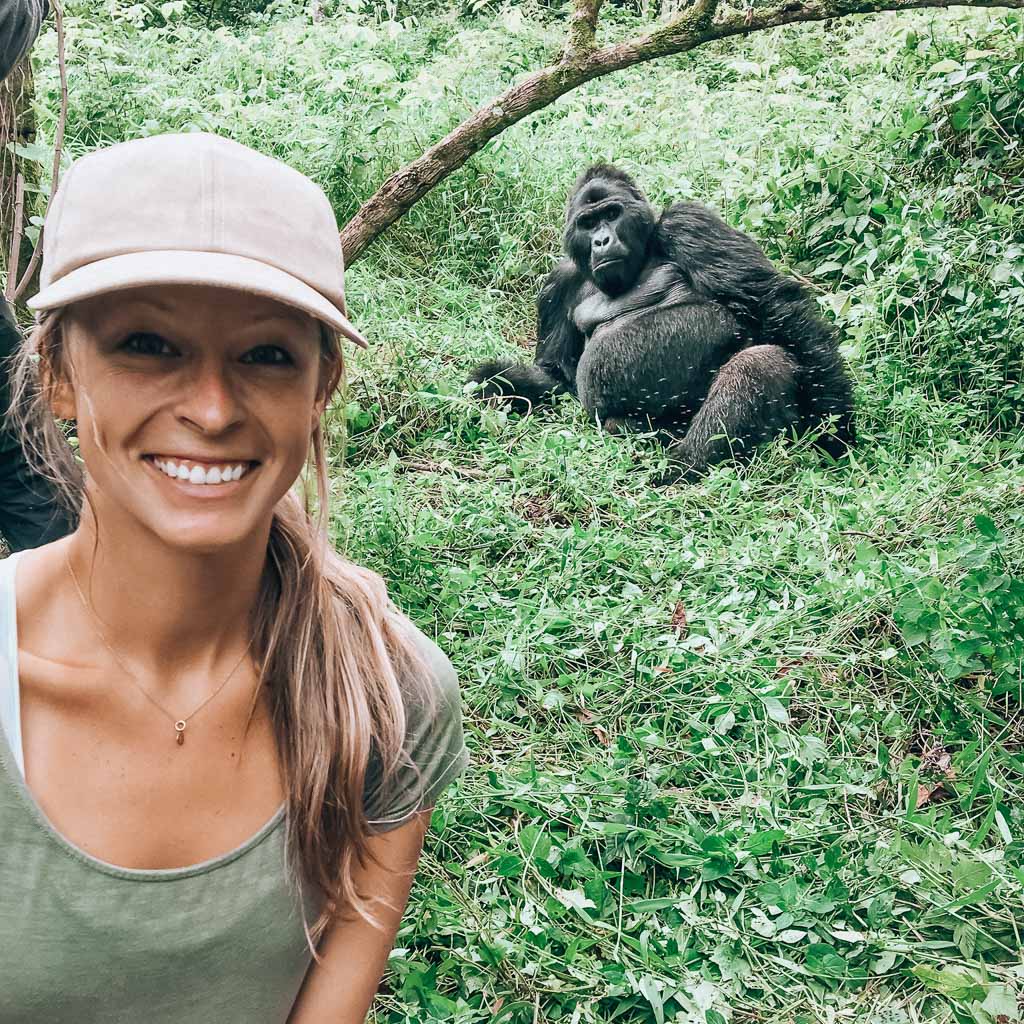
The Caribbean island of Aruba is home to perfect weather, perfect beaches and an incredible clash of food and flavors. But it has adventure in abundance, too. Georgina Lawton sets off to unlock the island’s secrets.


The Caribbean island of Aruba is home to perfect weather, perfect beaches and an incredible clash of food and flavors. But it has adventure in abundance, too. Georgina Lawton sets off to unlock the island’s secrets.
The first thing you should know about Aruba is that although the island sits in the southern Caribbean—about 15 miles off the coast of Venezuela—it’s actually an independent country within the Kingdom of the Netherlands. That’s right, the Dutch kind of Netherlands.
Second thing to note: Its proximity to the equator means it has postcard-perfect weather all year round. Sea, sunshine and (very white) sand attracts tourists to this 70-square-mile strip, also known as “one happy island”. But what many don’t realize is that Aruba is also home to a wild and rugged east coast, aloe-strewn hillsides, and lively city metropolises packed with street art.
I’m a British writer who has traveled solo many times, sometimes to places with less tourism focus, like Santo Domingo in the Dominican Republic, and other times to destinations that are heaving with crowds, like Santa Marta, Colombia. I’m here to see if a) Aruba is geared up for solo travel; b) what lies beyond its resorts; and c) whether the island is deserving of its ‘happy island’ moniker.
For this trip, I split my time between a boutique hotel with a casual vibe, and a fancier beach-front hotel. Manchebo is the fancy hotel on the western point of the island with thatched-roof yoga huts and access to its namesake, Manchebo Beach. After a few days spent melting into my sun lounger and talking to absolutely no-one, I move spots for a more social vibe.
I loved hostels in my backpacking days, as it’s where you meet other travelers. So I check-in to Swiss Paradise Aruba, a collection of Spanish-style villas that are boutique but still offer up a friendly, community environment, in the island’s Noord (north) area. On arrival, the owner Juerg Braendli, gives me a few pointers: “[Aruba] is very safe—I leave my doors unlocked,” he tells me, adding, “You can do solo travel here, but you do need a car to get around.”
The cultural diversity plays out in many ways, but it’s especially evident in the local art movement. Which I’m about to explore for myself.
He also says Eagle Beach is the best for socializing, so that’s where I head. Just outside the capital of Oranjestad, it’s buzzing and packed with people skimming the water on jet skis. The palapas (shade huts) along the beaches are free to use in Aruba, and when I explain this to an American traveler, she thanks me by buying me a sun lounger. I make my first friend.
If you like a more serene beach, Arashi is your best bet. On the northwestern side of the island, Arashi is free from the bustle but equally as beautiful, with crystalline waters and white shores lined with divi trees—a large shrub native to parts of the Caribbean and Central America.
“Most Arubans are multilingual and speak four languages: Dutch, English, Spanish and Papiamento,” my taxi driver tells me as we drive through heavy heat along dry, dusty roads.
Is Papiamento largely Portuguese? I ask. “Papiamento is a mix of all three of those, along with some Portuguese and Arawak Indian,” he explains. Interesting. Aruba was originally inhabited by the Indigenous Arawak people who were displaced in the early 16th century; nowadays there are more than 100 nationalities currently living here, the biggest groups being Dutch, Colombian and Venezuelan.
This diversity plays out in many ways, but it’s especially evident in the local art movement, which I’m about to explore for myself. A 30-minute drive from Oranjestad, is Aruba’s second-largest city—San Nicolas—where there’s a thriving mural scene.
You can wander the Sunrise City road murals solo or jump on a guided tour to learn more about the artworks, many of which cover socio-political themes and include works from international and local artists.
Oscar Bolivar heads up Aruba Mural tours, which is linked to Artis, a gallery showcasing local artists. Inspired by the street art in Bogota, Colombia, Bolivar started the tours in 2017. “People who visited the gallery kept requesting [tours]” he tells me. “People want to bring art home with them now, instead of cheap souvenirs.”
So far I’ve tucked into bitterballen, a Dutch snack of deep fried meatballs, and my fill of Dutch specialty pancakes at Linda’s Pancake House, but I’ve yet to sample Aruban cuisine.
Luckily, I meet local Liam at a bar in Palm Beach—the central island hub full of glamorous hotels and noisy bars. We talk travel, and then we talk food. Aruban cuisine, much like the island’s mix of cultural influences, is “mixed up” according to Liam. But seafood is definitely on the menu, and so is spice.
So we head to Zeerover, the most famous seafood spot on the island. Meaning ‘pirate’ in Dutch, Zeerover is an institution, a casual waterside spot with fish and shrimp by the kilogram, served in colorful plastic bowls piled with thick fries.
The so-called Aruba effect: An overwhelming sense of peace that supposedly enters your body when visiting the island and stays in your system long after leaving.
We feast on mahi-mahi—golden but not greasy—doused with the best hot sauce I’ve ever tasted. It’s spicy and zesty, accentuating the flavor of the fish without overpowering it. I study the label: Hot Delight Papaya, a local sauce made from papaya fruit.
Liam also orders a side of pan bati, a spongy Aruban bread not dissimilar to an English crumpet. I copy his technique, piling the bread with pieces of fish and dollops of hot sauce before folding it into my mouth. Delicious.
Driving is the only real way to see most of the island, and a rental car starts at around USD$70 a day. Otherwise, it’s a day pass for the local bus. But to explore the dramatic desert landscape, you’ll need a 4×4. I opt for an off-road UTV tour with Around Aruba Tours.
Most companies offer variations on a route that covers: Arikok National Park, a protected landscape of jagged limestone and lava, Indigenous rock drawings and sightings of wild goats, iguanas and parakeets; the Alto Vista Chapel, an historic Catholic church built in 1750 by Spanish missionaries; the Bushiribana gold mill, active in the Gold Rush era circa 1824 and now a stone ruin; and a natural pool or beach.
Driving through the cacti-strewn hillsides and rocky roads, I almost fly out of my seat many times after hitting a boulder or skidding in sand. But taking a dip in the warm waters of Baby Natural Pool makes the drive worth it.
On the western side of the island, the aquamarine cave pool is accessible from a steep ladder across sharp rocks. To get into the water, you climb in from the bottom, or jump. It’s only about six feet down, but it took me a few minutes to work up the courage. The tour was also a great way to make some friends for the day: I ended up filming content with a group and we airdropped it to each other on the way home.
“We have several different vibrations to play with,” says Venezuelan breathwork teacher, Andrea Herrera. We’re sitting on Palm Beach, surrounded by an array of gold bowls, about to take part in a sound healing class.
“The resonance of the earth is 7.83 hertz so we use that in the practice because it has the properties to ground us and bring us to a place of stillness,” she explains. The next hour is mellow and meditative, with Andrea guiding us into yoga positions and balancing the bowls on our back as she taps them with a mallet to produce soft sounds and sustained vibrations.
I’d read about the so-called ‘Aruba effect’: An overwhelming sense of peace that supposedly enters your body when visiting the island and stays in your system long after leaving. And after the class, I definitely feel lighter, more relaxed.
While Aruba hasn’t been the easiest solo travel destination—it’s perhaps better suited to couples and people who drive—it has, undoubtedly, been stress-free. And unforgettably gorgeous. The local people are warm and engaging, the sites are diverse and interesting, and the general undertone of the island is joyous. I’d say this is “one happy island” for sure.
The writer was supported by Aruba Tourism Authority during their stay.
***
Adventure.com strives to be a low-emissions travel publication. We are powered by, but editorially independent of, Intrepid Travel, the world’s largest travel B Corp, who help ensure Adventure.com maintains high standards of sustainability in our work and activities. You can visit our sustainability page or read our Contributor Impact Guidelines for more information.

Georgina Lawton is a fan of solo exploring, adventure travel and is the author of the travel book, 'Black Girls Take World' and memoir 'Raceless', both released in 2021. She's traveled the world alone for more than a year; some of her favorite countries include Nicaragua for unspoilt hikes and beaches, Indonesia for the food, and Brazil for just about everything. Originally from London, she now lives in Lisbon, where she is working on her first novel and learning Portuguese in between writing and making travel content on TikTok.






Can't find what you're looking for? Try using these tags: